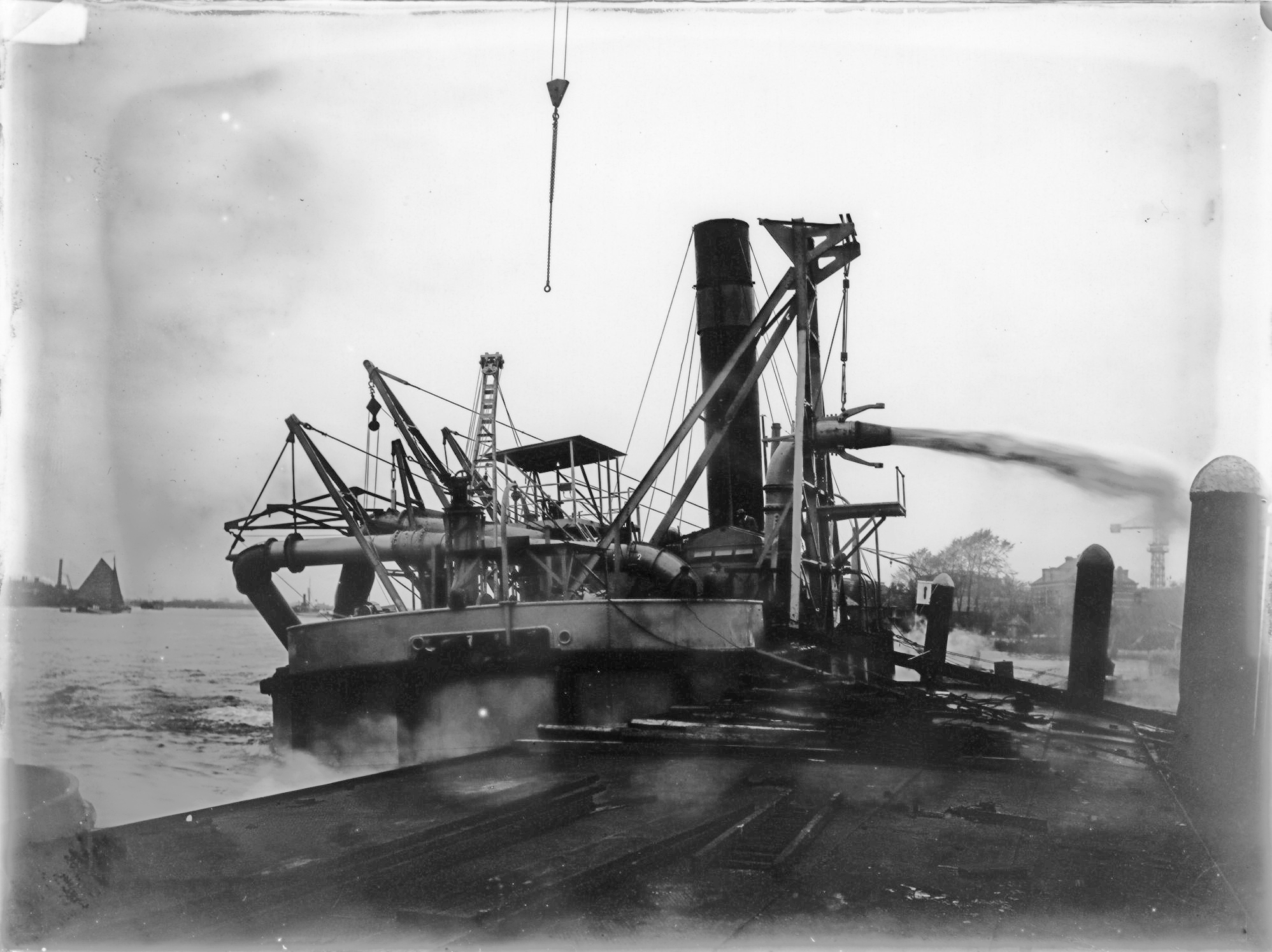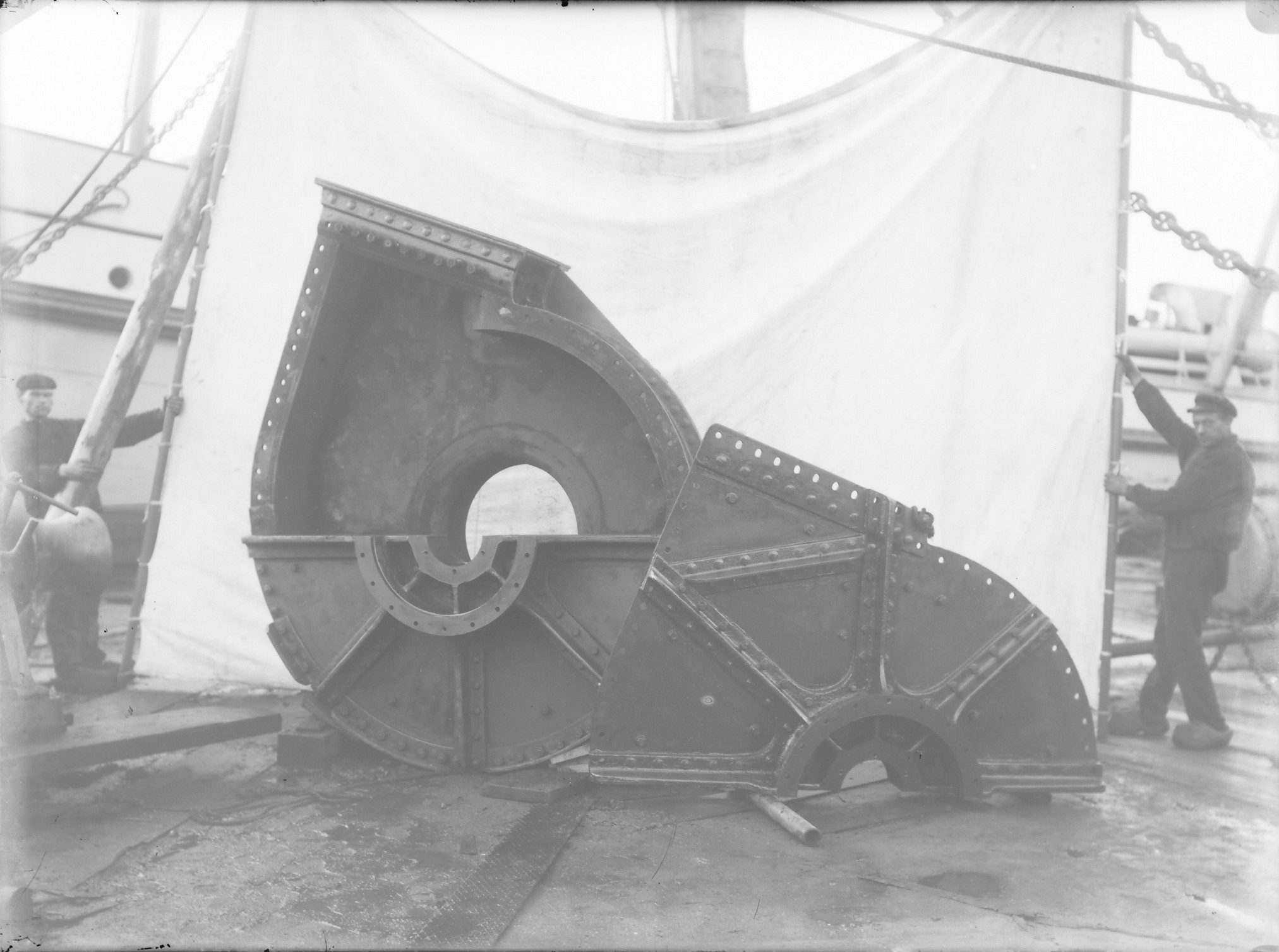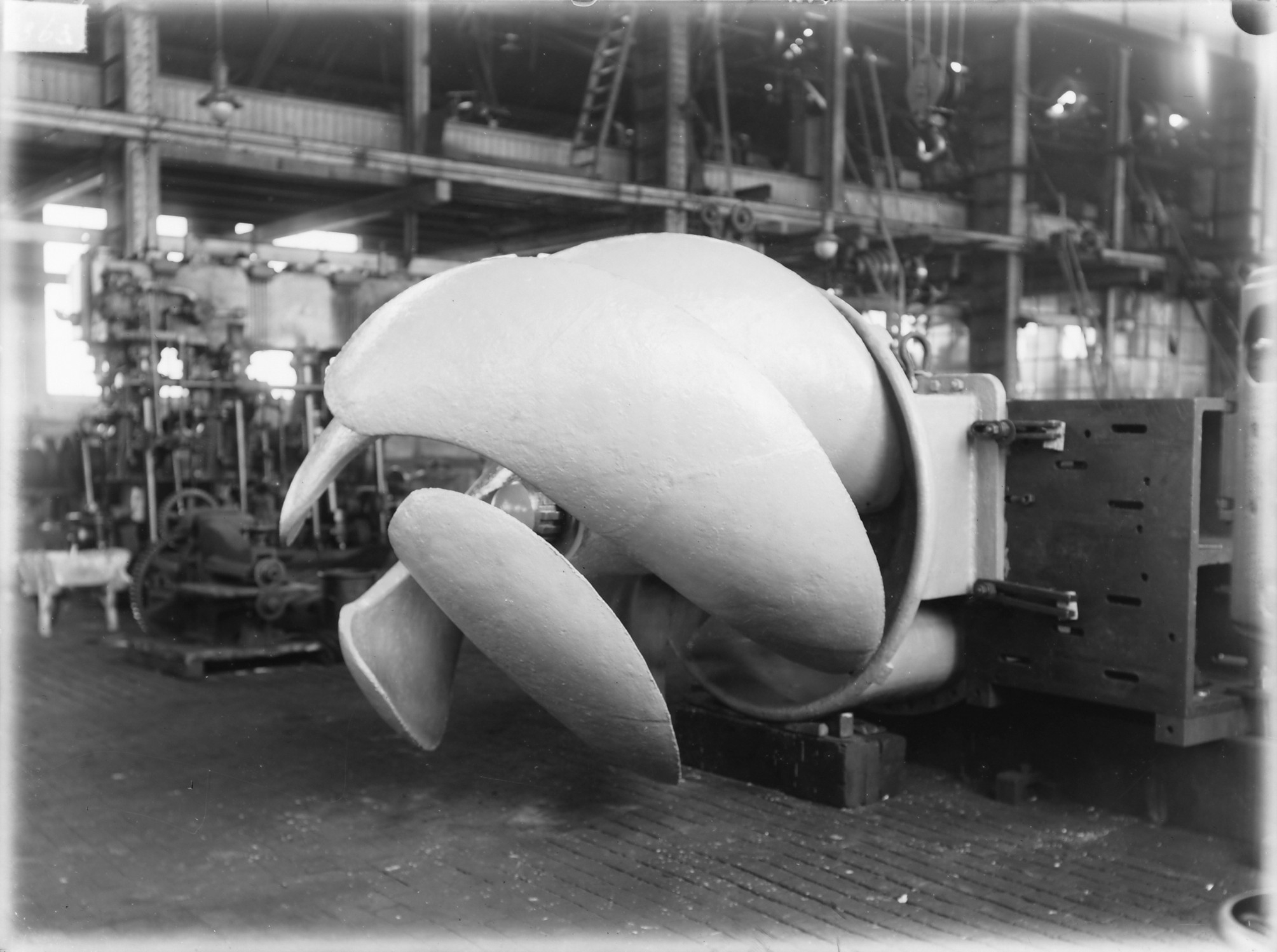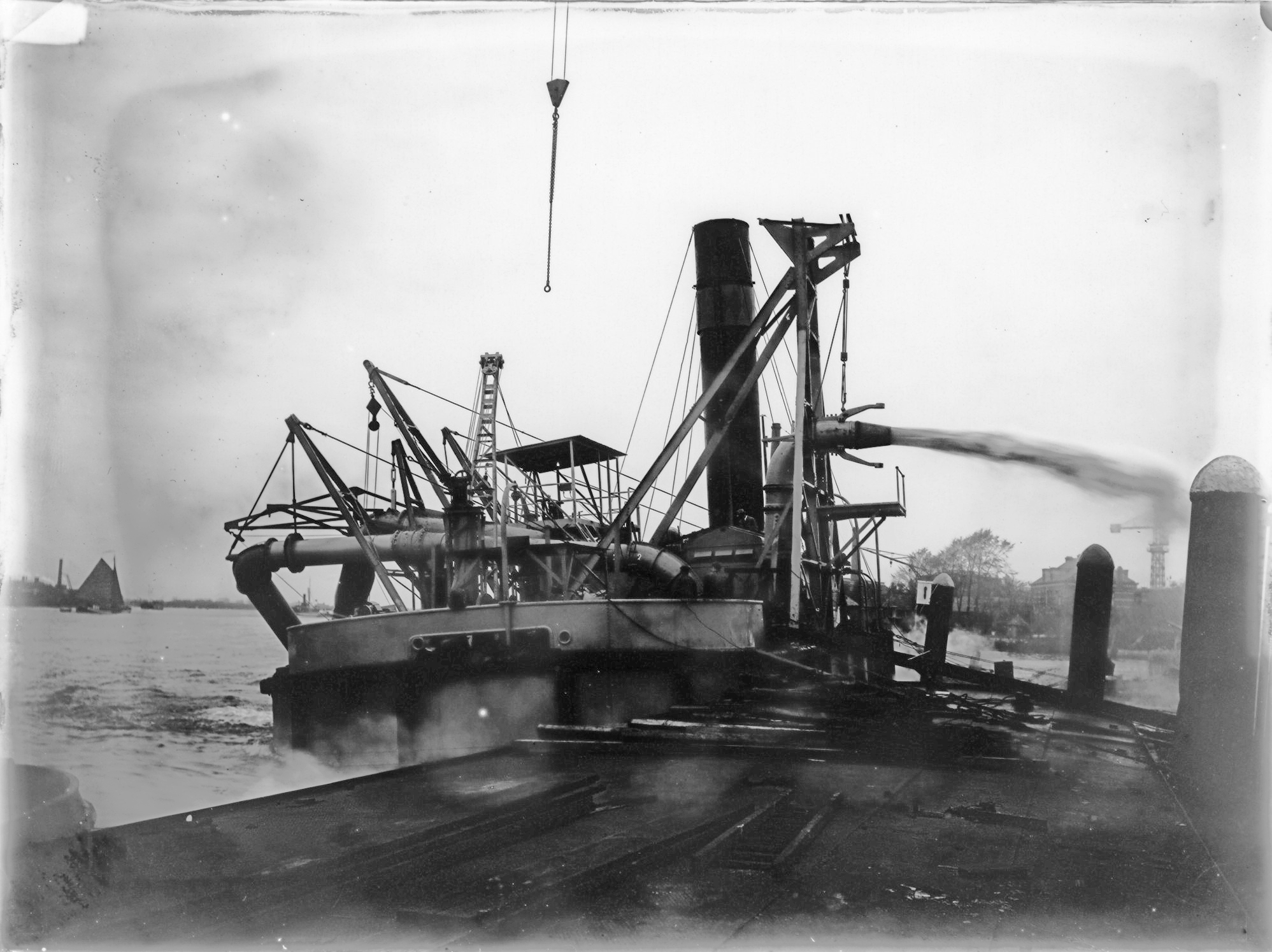
History of dredging
Throughout history, the transportation of people and goods by water has been crucial, but it has been hindered by siltation and sedimentation.
From the beginning of civilisation, people, equipment, commodities and materials have been transported by water. The ability to ship people and goods via inland waterways and oceans was – and still is – largely dependent on water depth. Since the natural phenomena of siltation and sedimentation threaten the navigational depth of rivers and their deltas, people constantly fight a battle against siltation. For many centuries, this battle was fought by hand, simply digging up the mud.
In the 15th Century, overseas trade picked up. As ports became more important and ships became larger, new dredging methods were developed. Primitive bed levellers, such as the famous “Zeeuwse Krabbelaar” Zealand Scratcher, were used in access channels of ports. These agitation dredgers scratched the river or seabed, so that the current could pick up the sediment and flush it away.
From mud mill to suction dredger
Around 1575, mud mills arrived on the scene. This type of dredging equipment was used for digging in ports and consisted of a rotating chain with wooden boards to dig up the mud. At first, these mud mills were powered by men or horses, but later the steam engine took over. The steam-driven bucket dredger superseded the mud mill, but the earliest bucket dredgers were very unreliable. It wasn’t until 1857 that a suction dredger was built in the United States. The GENERAL MOULTRIE was equipped with a single 47cm-diameter suction pipe and a deck-mounted centrifugal pump. Her hopper capacity was 118 cubic metres. The GENERAL MOULTRIE was put to work on the Charleston River, but sunk in 1858.
Over the years, major dredging projects all over the world stimulated the development and construction of new dredging equipment. In 1867, suction dredgers designed by French engineer Henri-Émile Bazin were used in the construction of the Suez Canal. From then on, dredging by suction became more and more common. The cutter suction dredger made its appearance towards the end of the 19th Century. It was developed in order to overcome the limitations of mere suction dredgers, that were unable to deal with harder soils.


Trailing suction hopper dredgers
The trailing suction hopper dredger found acceptance in all parts of the world in a relatively short period. Before the 1960s, this type of dredger was hardly ever used. But as the number and size of oceangoing ships increased, wider and deeper channels and harbour basins were required to accommodate them. The trailing suction hopper dredger is the perfect answer, as it dredges while under way and therefore doesn’t hinder shipping traffic.
Recent developments
Recent evolutions in dredging focus on optimising the dredging process. Developments include more powerful dredge pumps, standardisation of dredgers and equipment, and advanced control and monitoring systems. Nowadays, we are still facing various dredging challenges. Some of these challenges are:

Want to know more about dredging?
Sign up for our newsletter.